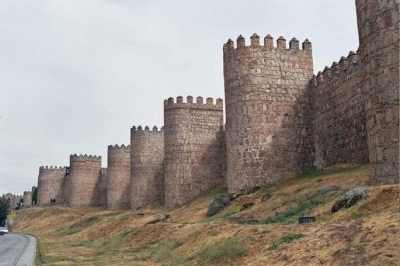
About the site
Built in the latter part of the third century to defend the Roman town of Lucus (now, Lugo), the Roman Walls of Lugo are one of the finest examples of late Roman fortification is Western Europe. Situated in the region of Galicia in north-western Spain, these walls contain the city of Lugo, the world’s only city that is completely surrounded by ancient Roman walls. Stretching about two km around the city, these fortifications were added to the UNESCO World Heritage List in 2000. Most of the original structure remains intact.
The walls
The walls of the fortification are faced with stones such as slate and granite, and the core of the wall is a combination of gravel, pebbles and Roman stone recycled from demolished buildings. The heights of the walls vary between eight and 12 metres, with a width of about four metres stretching to seven metres at some points.
The walls contain 85 external towers, ten gates, four staircases and two ramps which provide access to the walkway along the top of the walls.
When they were first built, each of the towers contained access stairs leading from the intervallum (the clearing between the walls and the city) to the walkway. Of these, 21 stairways have been discovered so far.
The gates
A total of ten gates are present along the fortifications. Five of these are from the Roman times, while the remaining were added in 1853 to accommodate the town’s expanding population. The best preserved gates are the Porta Falsa and the Porta Mina. Porta Mina still has its original vaulted arch set between two towers.
The towers
Of the original 85 towers, 49 are intact and the remaining have partially survived. Built at irregular intervals along the walls of the fortification, the towers are two-storeyed and are mostly semicircular. A few of them are rectangular. A mix of materials was said to be used to construct the tower. Most often, the base of the tower was built in dressed granite, with the remainder in slate.
The fortification today
Over the years renovation work has been carried out on the fortification. Most part of the original layout and features such as towers, battlements, stairways, the modern and original gates, and a moat have been retained.
Today, a walkway over the walls allows visitors to stroll the entire length of the fortification, and a popular festival called Arde Lucus is held every year to celebrate the city’s Roman past.
Picture Credit : Google




